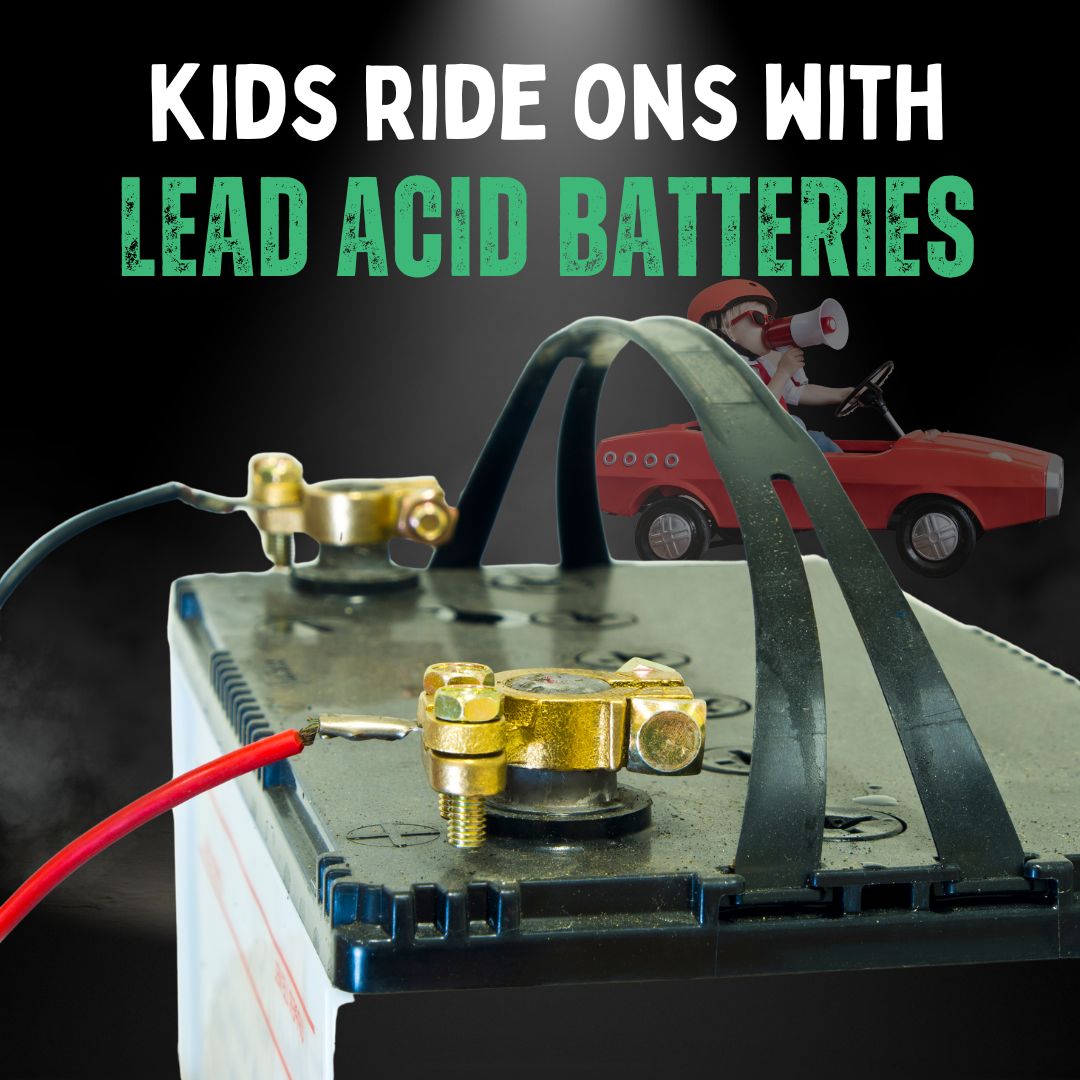
Updated: 24.4.25
Wondering what powers your child’s ride-on toy? You're not alone. In an era filled with sleek gadgets and rapid innovation, many parents are surprised to learn that most kids' ride-ons still rely on lead-acid batteries.
So why this traditional choice in a tech-forward world? Let’s break down the practical reasons behind it—along with the pros, cons, and what it means for playtime.
The Drawbacks of Lead-Acid Batteries
Heavyweight Design
Lead-acid batteries are bulky, making ride-ons heavier and a bit tougher for smaller kids to steer or carry.
Eco Concerns
They contain lead and sulfuric acid—materials that must be responsibly recycled. Disposal mishandling can lead to environmental harm.
Slow Recharge Times
Compared to modern lithium batteries, lead-acid units take longer to fully recharge—meaning more waiting and less spontaneous fun.
Shorter Lifespan
They tend to wear out faster and may need replacing more often, which can add to your overall cost over time.
Related: Get The Most Out Of Your Kids Ride-On Car Battery
Maximise Battery Lifespan
- Charge Regularly: Don’t let it drain completely before charging.
- Store Properly: Keep the battery in a cool, dry place when not in use, and top it up periodically.
- Watch the Weather: Extreme temperatures shorten battery life. Aim for mild storage and usage conditions.
Why Lead-Acid Batteries Are Still the Norm
Affordability
Lead-acid batteries are budget-friendly—helping keep ride-on toys accessible to more families.
Dependable Power
They deliver strong, steady current, making them a reliable option for powering electric motors in ride-on vehicles.
Easy to Find
These batteries are widely available, which means faster and easier replacements when needed.
Low Maintenance
Modern sealed designs require minimal upkeep—perfect for busy parents.
Proven Track Record
With decades of refinement behind them, lead-acid batteries offer consistent performance and safety.
Built for Play
Durable and rugged, they hold up well to the bangs and bumps of everyday child’s play.
Cost Over Time: A Quick Comparison
- Lead-Acid: Low upfront cost, but may require more frequent replacements.
- Lithium-ion/NiMH: Higher price initially, but often last longer.
- Maintenance: Factor in effort and cost for upkeep and storage.
Modern Alternatives
Lithium-Ion
These high-performance batteries are lightweight and charge quickly—but cost more and demand careful handling.
NiMH (Nickel-Metal Hydride)
Offering a middle ground, NiMH batteries provide higher energy density with fewer safety concerns, though they’re pricier and less widely stocked.
Battery Capacity & Toy Performance
- More Capacity = More Play: Bigger batteries mean longer rides between charges.
- Tech Trade-Off: Lead-acid gives dependable runtime, but lithium and NiMH last longer per charge.
What Parents Should Consider
Making the Right Choice
Weigh your priorities: cost, playtime duration, safety, eco-friendliness, and how often your child will use their ride-on.
Built-In Safety
All ride-on batteries—lead-acid or otherwise—must meet strict safety regulations. Just be sure to follow usage guidelines and keep compartments secure.
Choosing Based on Battery Type
- Use Frequency: Daily riders benefit from a longer-lasting battery.
- Budget vs. Longevity: Spend more now for fewer replacements—or save now and replace more often.
- Regulatory Assurance: Stick with brands that meet recognised safety standards.
Conclusion
Lead-acid batteries are still the go-to for most ride-on toys thanks to their affordability, simplicity, and tough build. But as tech evolves, alternatives like lithium-ion and NiMH offer exciting benefits for families seeking longer playtimes or lighter vehicles.
Ultimately, the best battery depends on your child’s habits and your family’s values. And whichever power source you choose, the goal is the same—unforgettable fun on four wheels.
FAQs
Can I upgrade to a lithium battery?
Yes, but it’s essential to check compatibility with your ride-on’s motor and circuitry. Upgrades may void the warranty, so consult the manufacturer first.
How should I dispose of a lead-acid battery?
Take it to a designated recycling facility or battery retailer. Never throw it in regular household waste due to hazardous components.
Is it safe for my child?
Absolutely—when used properly. Keep the battery compartment closed and dry, and supervise younger children during play.
When should I replace the battery?
If the toy has noticeably shorter run times or struggles to charge, it’s likely time for a new battery.
Get in Touch 🚀
Loved our article on Why Do Most Kids Ride-Ons Come With A Lead Acid Battery?
We’ve got even more in store! Head to RiiRoo.com or chat with us live. We’re here to help you power up your child’s playtime!






Share:
Cleaning and Maintenance of Dirt Bike Battery Terminals
How Long Does An Electric Dirt Bike Battery Last?